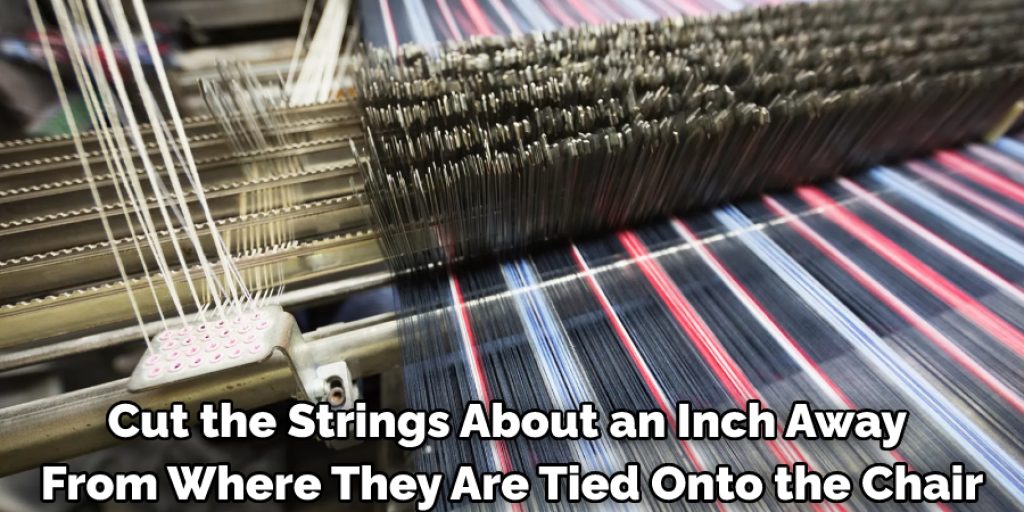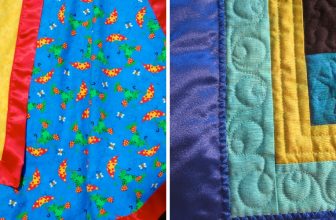How to Weave a Scarf Without a Loom
Wool is an excellent material for weaving because it’s flexible and woven in many different styles. This article will teach you the basics of weaving a scarf without a loom so that you can make any style of wool scarf, from thick and chunky to thin and lightweight.
Weaving scarves on your own without using a loom might seem intimidating, but with some simple techniques and materials, we’ll show you just how easy it is! Follow this blog post below for all the steps on this beginner-friendly weaving technique.

8 Reasons Why Weave a Scarf Without a Loom:
1. If you don’t have a loom, no problem! Sometimes looms are very big and bulky; some looms can be quite expensive. However, learning how to weave a scarf without using a loom with these simple steps is still possible!
2. Weaving is an art form that employs a variety of techniques, many of which don’t require the use of a loom. This in no way diminishes the importance of loom-weaving, but it broadens the possibilities for those who love to weave.
3. Using weaving techniques, you can make beautiful woven wall hangings that won’t need supporting bars to maintain their shape.
4. These techniques can also be used to create accessories like belts, headbands, and necklaces!
5. You can make your piece of cloth or tapestry by doing this technique; it’s not just for creating scarves!
6. Kids can benefit from learning how to weave without a loom. It’s fun, and therapeutic, and it will help them learn about the different techniques used in weaving, all before they even touch a loom!
7. If you’re using this technique to create wall hangings or clothing, you’ll be able to make your unique piece of art! You can customize your scarf by choosing the colors that are most pleasing to you.
8. It’s straightforward to learn, but there are some simple steps involved with this technique. This will be a great project for beginners if you’re learning how to weave without a loom.
7 Ways on How to Weave a Scarf Without a Loom:

Method 1: Weaving by Hand
With a little practice, you can learn to weave a scarf on a loom that doesn’t exist. All you need is your hands and some string or embroidery floss. To start, tie one end of the string to something hip height, such as a doorknob.
Loop the other end around your dominant hand’s index and middle fingers, so it is taut but not too tight. Pull out about a yard of string to work with. Then wind the rest of the series around the backside of your index finger until you have 4-6 inches left to weave with.
Method 2: Weaving by Machine
Though perhaps not as satisfying as weaving by hand, this method is faster and easier. In addition, all you need is a sewing machine with an overlock stitch; the type of stitches typically used to finish seams on knitwear work well.
Method 3: Using Craft Cord
If you don’t want to bother with tying or pinning your cords, you can buy a set of pre-tied cables to weave with. Make sure your line is long enough so that it won’t pull through the fabric when stretched.
Method 4: Warping a Loom
One common way of weaving fabric is with a loom made from strings or wires that cross to form squares. The lines or wires are adjusted to create the desired size and shape for your fabric, and then yarn is added in an over-under pattern on each string. When you’re finished weaving, you can take apart the loom and untie the strings to get a piece of woven fabric that’s ready for finishing.
Method 5: Simple Frame Loom
This simple loom consists of a piece of board, dowels or PVC pipe, and some yarn. It’s lightweight and easy to store. To use it, first, attach your warp strings to the frame by wrapping them around sticks or rods on each side of the frame. Next, wrap additional strands vertically between these two groups of cords to add even more support.
Then, tie the end of your yarn to one of the crossbars on the frame and bring it around to the backside so it’s taut but not too tight. Then, starting with the outermost string, begin making over-under passes through your warp strings until you get back to where you started. Once you’ve completed the length you want, tie off the end of your yarn and trim it.
Method 6: Loom-Band Loom
This loom is made of nylon and comes pre-tied with elastic loops. Just like the simple frame loom, you attach your warp strings to the loom’s frame by wrapping them around sticks or rods on each side. Remove it from the loom to finish your fabric and cut the warp strings.
Method 7: Wide Band Loom
This loom is made of durable plastic and comes pre-tied with elastic loops. To use it, first, attach your warp strings to the frame by wrapping them around sticks or rods on each side of the frame.
Next, wrap additional strands vertically between these two groups of cords to add even more support. Then tie your yarn to one of the crossbars and bring it around to the backside, making over-under passes through your warp strings until you get back to where you started.
Some Tips and Tricks:

1. Start by tying the warp thread onto your chair, and do multiple knots in different places so you know where to cut when it is time. Then begin weaving! Make sure you are using all of the strings to ensure even sides when you are done! You can use a ruler or anything similar to push the string down when needed.
2. To keep the string even on both sides, you can flip it to the opposite side now and then.
3. After you are done weaving, cut the strings about an inch away from where they are tied onto the chair.
4. Fold in half around 10 or 11 inches long (you can make it longer if you want it to be an average scarf width), and cut about an inch away from where you folded.
5. Tie a knot in one end and cut the other end to make it knot-able.
6. At the opposite edge of where you tied off, tie a simple knot (similar to when you tie your shoe) and trim any excess strings away.
Conclusion:
Weaving a scarf without a loom is an easy way to make your gift. It’s also known as the Reversible Knit Scarf. With this method, you can weave two scarves at once with one set of knitting needles! This article provides step-by-step instructions on how to weave a scarf without a loom.
The first step is to find the center point of your yarn, which will likely be where it was cut from the skein or ball. Next, lay two strands parallel to each other to touch for about an inch on either side of the center point. If you need more help or want to learn other ways to create different knitted items, be sure to watch our blog post about DIY crafts for knitters. Happy weaving!




